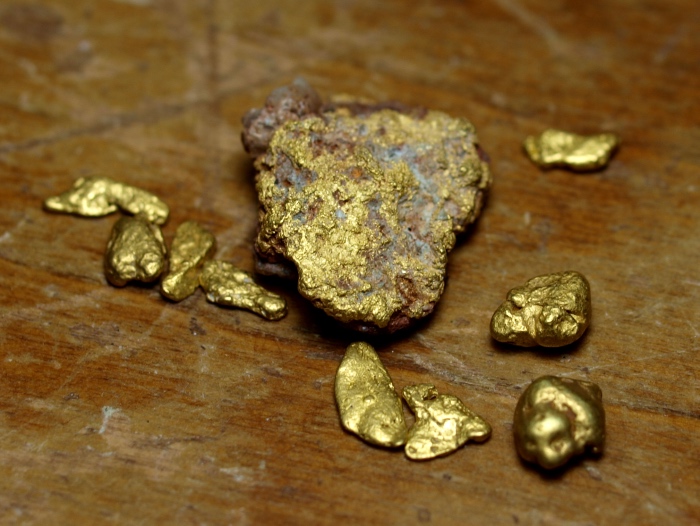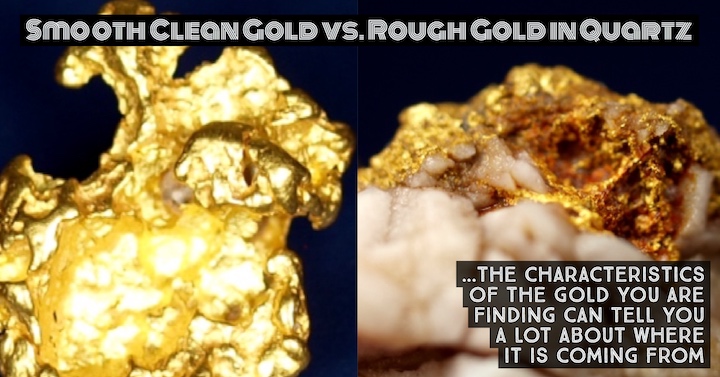
I had a discussion with a fairly newbie gold prospector recently. He has been finding some decent gold, mostly down in dry creek beds on club claims and known gold mining areas.
He mentioned his confusion about where gold actually occurs, and how anyone would ever go about finding the source of the gold, rather than just the fine placers that eventually concentrate down in the wash.
True Prospecting
His question is an interesting one, and one that many gold hunters never bother to ask. In fact, the word “prospector” is actually overused in my opinion. If all you ever do is go to the same old places that everybody else goes, are you really prospecting?
The early prospectors didn’t have the knowledge of others. They primarily had to use their own skills to recover the gold. What I want to talk about today is the potential of finding the source of gold, and perhaps how to locate a rich patch outside of the wash.
Evaluate the Gold you Find
One think I notice is how little attention prospectors give to the actual gold they are finding in regards to its characteristics. The coarseness or smoothness of a nugget can tell you a lot about its origin. As can any matrix that it might contain.
If you are only finding small bits of gold dust, then your best bet is to keep working down in the gulley where fine placers accumulate. But if you are finding some nuggets, take a closer look at them.
Coarse Nuggets
Gold is a soft, malleable metal. Given a few thousand (or million) years in a waterway, and it will turn into a smooth round nugget with very little matrix.
On the other hand, a nugget that has recently broken loose from the vein may still be very rough textured. It will likely have some quartz or other rock attached.
If I am sluicing or dry washing in a creek bed and notice that a lot of the gold is rough, I am going to get out my Gold Bug 2 and start metal detecting some of the surrounding benches and hillsides to see if I can locate any more gold. Doing this may result in a lot more gold, including large nuggets that got hung up and never made it down into the creek.

Quartz and Rock Matrix
If you find a rough textured nugget with lots of quartz, you can bet that it eroded from the hills not too far from your current location. If it has traveled for miles and miles, it wouldn’t be likely to have that roughness. The same can be said for any type of natural crystalline matrix that you see. It doesn’t take long for this to erode away if the gold is moving.
Any host matrix is another indicator. A deep red down in the grooves of a nugget might lead you to a patch of rich red soils in the surrounding hills that is a source for gold. Even if it isn’t the exact location where the nugget came from, it can still show you they type of geology you are looking for.
Prospecting vs. Mining
There is a difference. If you truly want to be a skilled prospector, then you need to always keep a keen eye toward the ground and notice anything that may lead you to gold. Most people just dig and hope for the best. Even when they find good gold, they often don’t know much about gold itself and are limited in their prospecting ability.
Studying a gold nugget itself, and thinking about how far it may have traveled or where it may have come from, might just lead you to many, many more.

